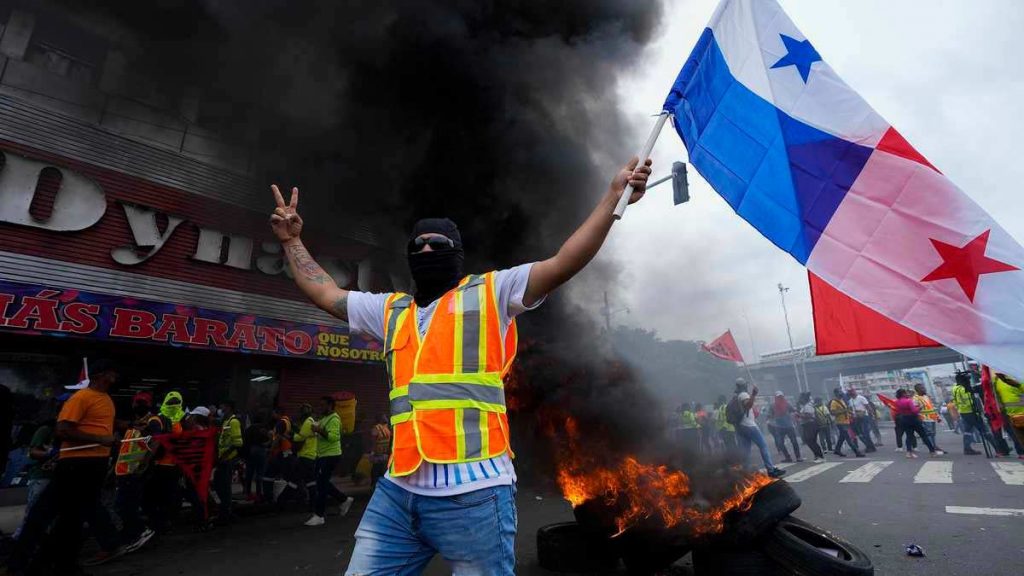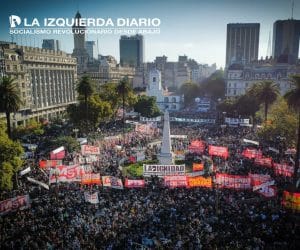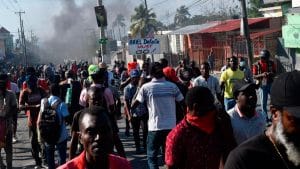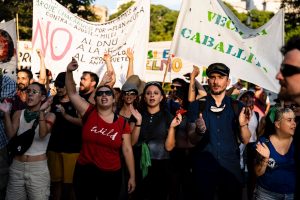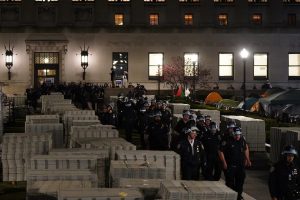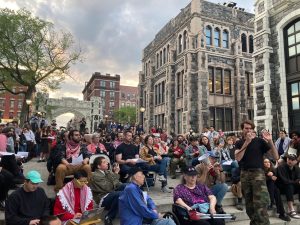For three weeks now, protests have been gradually spreading throughout Panama. Price increases, along with growing inequality over the past several years, has triggered one of the largest mobilizations the country has seen in several decades. The movement began with a major strike in the education sector, which is now spearheading the mobilization. It was joined soon thereafter by the powerful construction union, social organizations, Indigenous groups, and other working-class and poor sectors, and even by some in the middle class.
This large-scale mobilization opposes the government of President Laurentino Cortizo, which since 2019 has been trying to implement policies favored by the International Monetary Fund (IMF) and the Panamanian bourgeoisie. Radical actions have been a hallmark of the movement. Many roads have been blocked, including the Pan-American Highway, a crucial part of Central America’s infrastructure on which huge volumes of goods travel every day. The blockades have also led to significant shortages, particularly in Panama City, the capital.
The government has deployed a host of repressive forces across the country to confront the situation.
A Dollarized Country Hit by the Covid Crisis and Inflation
Panama, a neoliberal country that was invaded by the United States in 1989, has a dollarized economy and has undergone significant growth thanks to revenues from the Panama Canal and the country’s service industry.1Translator’s note: The 1989 invasion of Panama by the United States, dubbed “Operation Just Cause,” began in mid-December 1989 and lasted just over a month. Its ostensible purpose was to depose General Manuel Noriega, Panama’s de facto leader (who had been a paid asset of the CIA), who was wanted for racketeering and drug trafficking in the United States. Noriega had become, according to some members of Congress and the American political establishment, a threat to the “neutrality” of the Panama Canal, which had been turned over to Panama from its long U.S. occupation 10 years earlier — but this reason for the invasion was not part of the wide public discourse. U.S. forces dissolved the Panamanian Defense Forces and installed a newly elected president, Guillermo Endara, from a leading Panamanian bourgeois family with close ties to U.S. capitalism. The invasion was condemned as a violation of international law by both the United Nations General Assembly and the Organization of American States. Its economy, though, slowed beginning in 2020 due to Covid-19. While growth has resumed, it has benefited only the population’s wealthiest people, while the working class, Indigenous people, and Panama’s peasants have become poorer.
Hand in hand with the IMF, the government has carried out major attacks on workers, with huge increases in layoffs and a drastic reduction in living standards. Back in 2015, an official report produced by the Economic Commission for Latin America and the Caribbean (ECLAC) revealed that 10 percent of Panama’s wealthiest families in Panama had incomes 37.3 times greater than the poorest 10 percent. It is these deep inequalities, combined with rising prices, that have triggered the current movement.
No to Social Dialogue. Build the Movement’s Power
The political crisis this movement has opened up is forcing the government to negotiate with many organizations, including the National Alliance for the Rights of the Organized People (ANADEPO), the United Popular Alliance for Life, political leaders of the Indigenous regions, and the peasant community. These groups’ main demands are for a reduction and freezing of fuel prices and energy, price rollbacks of food staples by up to 30 percent without adversely affecting producers, lower prices for medicines, an allocation of 6 percent of the country’s GDP to education, creation of an inter-sectoral monitoring committee to resolve the problems of corruption, among others.
Negotiations with the government began on Thursday, July 21, but as of this writing have failed to calm the strikes and mobilizations. The government has agreed to undertake some measures, such as lowering fuel prices and cutting the price of basic foods by 15 percent, a 15-percent reduction on basic food products, but this does not meet the full demands of the current movement.
What is clear is that the government is playing the social dialogue card as a way to calm the situation. Meanwhile, Panama’s workers have proven once again that they have the power to shut down the government and win some victories — just as the movement’s political and trade union leaderships have chosen to lower the intensity of the mobilizations and strikes as the negotiations take place. In contrast to this approach, the path to victory is to turn the mobilizations into a general strike to ensure that workers and the poor do not pay for the current crisis. That is the perspective we must champion!
The uprising in Panama is now added to the growing number of mobilizations we are seeing on five continents. Faced with widespread inflation, the Americas have been a key part of this movement, with recent mobilizations in Ecuador and a major strike at one of Mexico’s largest companies, TELMEX.
First published in French on July 25 in Révolution Permanente.
Translation by Scott Cooper
Notes
| ↑1 | Translator’s note: The 1989 invasion of Panama by the United States, dubbed “Operation Just Cause,” began in mid-December 1989 and lasted just over a month. Its ostensible purpose was to depose General Manuel Noriega, Panama’s de facto leader (who had been a paid asset of the CIA), who was wanted for racketeering and drug trafficking in the United States. Noriega had become, according to some members of Congress and the American political establishment, a threat to the “neutrality” of the Panama Canal, which had been turned over to Panama from its long U.S. occupation 10 years earlier — but this reason for the invasion was not part of the wide public discourse. U.S. forces dissolved the Panamanian Defense Forces and installed a newly elected president, Guillermo Endara, from a leading Panamanian bourgeois family with close ties to U.S. capitalism. The invasion was condemned as a violation of international law by both the United Nations General Assembly and the Organization of American States. |
|---|


